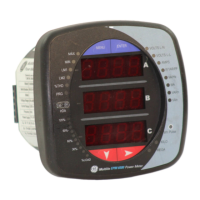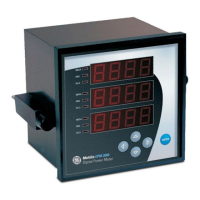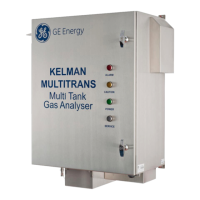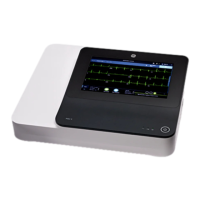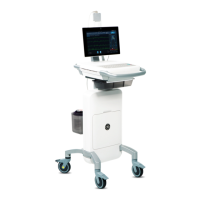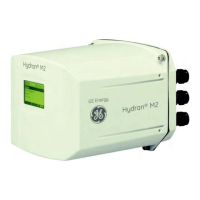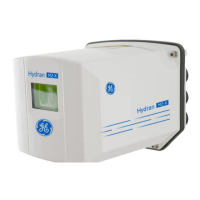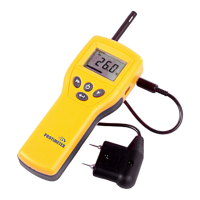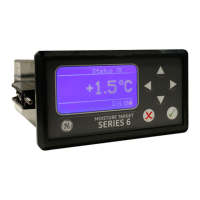CHAPTER 4: PROGRAMMING S4 ALARMS/CONTROL
PQM POWER QUALITY METER – INSTRUCTION MANUAL 4–41
• PHASE UNDERCURRENT LEVEL: When the average three phase current drops to or
below the level set by this setpoint, a phase undercurrent condition will occur. Refer to
the
DETECT UNDERCURRENT WHEN 0A setpoint description below to enable/
disable undercurrent detection below 5% of CT.
• PHASE UNDERCURRENT DELAY: If the average phase current drops to or below the
PHASE UNDERCURRENT LEVEL setpoint value and remains this way for the time
delay programmed in this setpoint, a phase undercurrent condition will occur.
• DETECT UNDERCURRENT WHEN 0A: If this setpoint is set to YES, undercurrent will be
detected if the average phase current drops below 5% of CT. If the setting is NO, the
undercurrent detection is only enabled if the average phase current is equal to or
above 5% of CT.
• PHASE OVERCURRENT RELAY: Overcurrent can either be disabled, used as an alarm
or as a process control. Set this setpoint to off if the feature is not required. Selecting
alarm relay will cause the alarm relay to activate and display an alarm message
whenever an overcurrent condition exists. Selecting auxiliary relay will cause the
auxiliary relay to activate for an overcurrent condition but no message will be
displayed. This is intended for process control.
• PHASE OVERCURRENT LEVEL: When the average (or maximum, see below) three
phase current equals or exceeds the level set by this setpoint, a phase overcurrent
condition will occur.
• PHASE OVERCURRENT DELAY: If the average (or maximum, see below) phase current
equals or exceeds the
PHASE OVERCURRENT LEVEL setpoint value and remains this
way for the time delay programmed in this setpoint, a phase overcurrent condition will
occur.
• PHASE OVERCURRENT ACTIVATION: The Phase Overcurrent function can use either
the average phase current or the maximum of the three phase currents. This setpoint
determines which is used.
• NEUTRAL OVERCURRENT RELAY: Neutral overcurrent can either be disabled, used as
an alarm or as a process control. Set this setpoint to off if the feature is not required.
Selecting alarm relay will cause the alarm relay to activate and display an alarm
message whenever a neutral overcurrent condition exists. Selecting auxiliary relay will
cause the auxiliary relay to activate for a neutral overcurrent condition but no
message will be displayed. This is intended for process control.
• NEUTRAL OVERCURRENT LEVEL: When the neutral current equals or exceeds the level
set by this setpoint, a neutral overcurrent condition will occur.
• NEUTRAL OVERCURRENT DELAY: If the neutral current equals or exceeds the
NEUTRAL OVERCURRENT LEVEL setpoint value and remains this way for the time
delay programmed in this setpoint, a neutral overcurrent condition will occur.
• UNDERVOLTAGE RELAY: Undervoltage can either be disabled, used as an alarm or as
a process control. Set this setpoint to off if the feature is not required. Selecting alarm
relay will cause the alarm relay to activate and display an alarm message whenever
an undervoltage condition exists. Selecting auxiliary relay will cause the auxiliary relay
to activate for an undervoltage condition but no message will be displayed. This is
intended for process control.
Courtesy of NationalSwitchgear.com
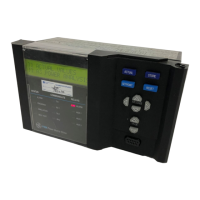
